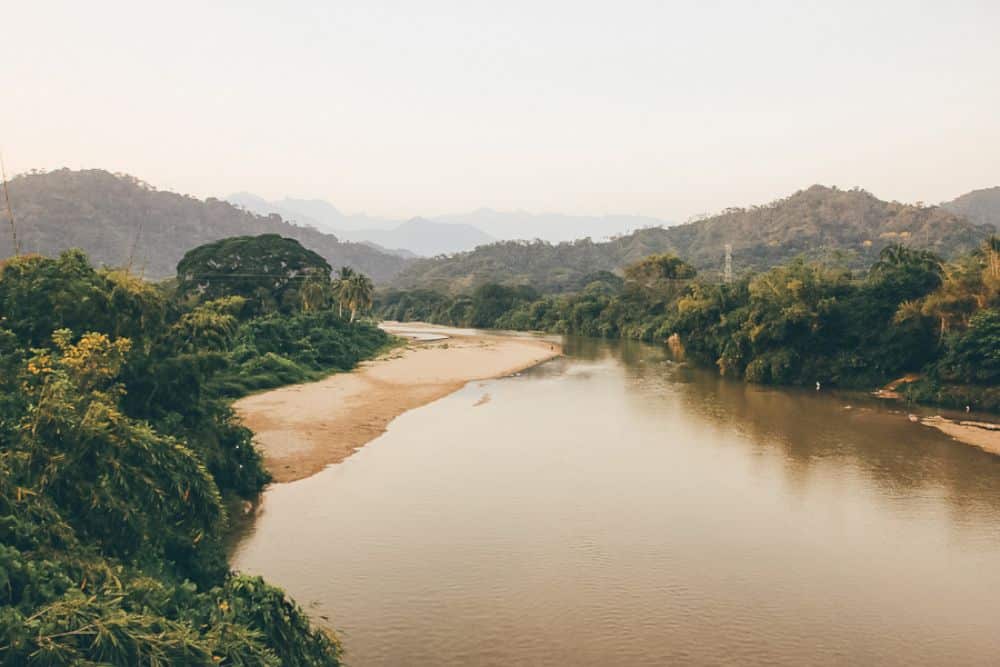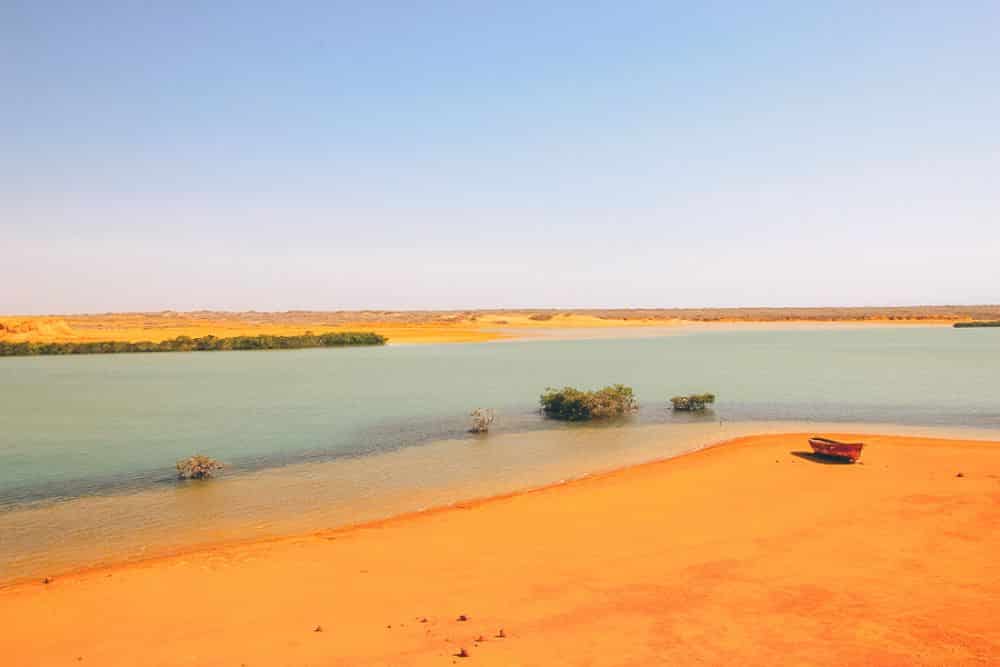
Guajira, a region of Colombia that appealed to us, off the beaten track and offering breathtaking scenery. Discover this little corner of paradise still untouched by mass tourism
But it’s also the territory of the Wayuus, an ethnic group that settled in the northeast of the country near Venezuela. Difficult to get to, Guajira is well worth the effort, but what a discovery! We’ll take you to this privileged, semi-deserted place that will surprise you and not leave you indifferent!
I invite you to read all our other articles on Colombia to help you prepare for your trip:
- Charming villages: Salento, Cocora Valley, Villa de Leyva and Raquira
- Medellin, what to do and where to stay in this city
- Cartagena, what to do in this city
- A cooking class in Cartagena
- Santa Marta and Tayron Park, all our practical advice
- Explore the Armenia and Salento regions, renowned for their coffee production
- Playa blanca, why we are disappointed with this beach
- Budget and 3-week itinerary
- Guatapé, an unusual hotel in Colombia
SOMMAIRE DE L'ARTICLE :
| BUT WHO ARE THE WAYUUS?
They are the country’s largest Amerindian people, living on the border between Colombia and Venezuela. This ethnic group, with its distinctive facial features, speaks its own language as well as Spanish, and lives mainly from weaving. You’ve probably heard of mochila bags ? hand-woven ethnic bags by women Wayuus… well, they’re made there. The women, dressed in long, colorful djellabas, take an average of 1 to 4 weeks to weave a bag. What a job!
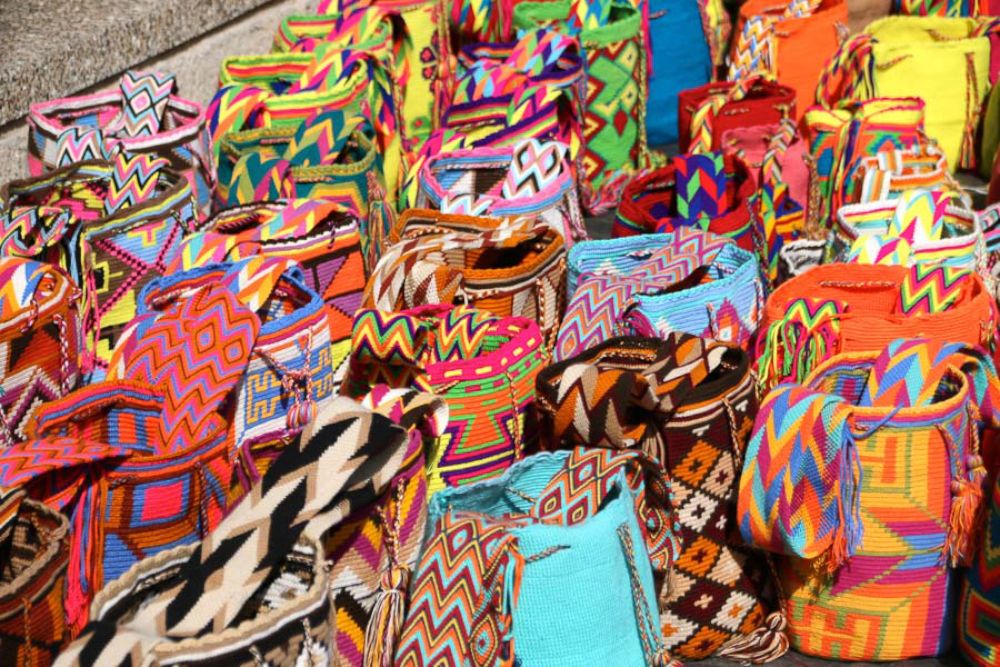
The Guajira is an almost deserted peninsula in northern Colombia, full of contrasts between sea, sand, coal, salt, cactus and a little oasis. This is the cradle of the Wayuu, children of the earth and rain, where the country’s finest hammocks (chinchorros), mochila bags and other handicrafts are made. I couldn’t wait to meet them and talk to them, like a child eager to go somewhere! It’s important to remember that they’re rather shy and reserved, and won’t necessarily go out of their way to talk to you. It’s up to you to make the effort and take an interest in them.
| HOW TO VISIT LA GUAJIRA
If you have time to spare, this region can be visited on your own up to Cabo de la Vela. Beyond that, things start to get complicated, as the roads turn into tracks and trucks rarely pass, so you’ll need to find a 4×4 to venture out Punta Gallenas, Colombia’s northernmost point.
It’s with great enthusiasm that we arrive at Santa Marta, departure point for Guajira. After some thought, we booked a 3-day tour as we couldn’t find anyone to go with us on the 4-day and unfortunately only had a few days to soak up the place.
The tour takes in the following places:
- Day 1: Santa Marta, Riohacha, Salines de Manaure and Cabo de la Vela
- Day 2: Cabo de la Vela, Dunes de Taroa and Punta Gallinas
- Day 3: Bahia Honda, Bahia Hondita and back to Santa Marta
So here we are, backpacked at 4:30 am for 3 days, heading for the northeastern tip of Colombia, on the border with Venezuela, in search of authenticity and tranquility amidst wide-open spaces. The road is long, the scenery beautiful and 5? hours later, marked by a breakfast break, we arrive for lunch at Uribia. Meet our first Wayuus women and sneak a peek at the salt marshes. We also change cars for a 4×4 and we start to make our way slowly into the heart of the Guajira until we reach Cabo de la Vela 1h drive from Uribia, having stocked up on dry cakes and water for the children who will be waiting for you at the roadside. Wondering why you should buy cakes? because the driver-guide gives them to destitute families who unfortunately beg as soon as you arrive. At first, the scene is funny because it’s a game with the children and us (they block your way – you give them cakes – they open the way for you), but as you drive on, you also understand that this region is very poor and in need. Our guide was respectful with these families because he was from the region, but that didn’t stop me from feeling uncomfortable at times!
J1 | PLASTIC, PLASTIC AND MORE PLASTIC
The first thing that strikes you when you arrive in the Guajira is to see the tons of plastic waste strewn along the roads. The Wayuus have absolutely no ecological conscience and don’t care about this issue. They’ve got used to it and aren’t even shocked by it. You can’t help thinking that consumer society has come down on them without knowing how to deal with it all. But fortunately, there’s more to the region than that, and we’re about to find out.
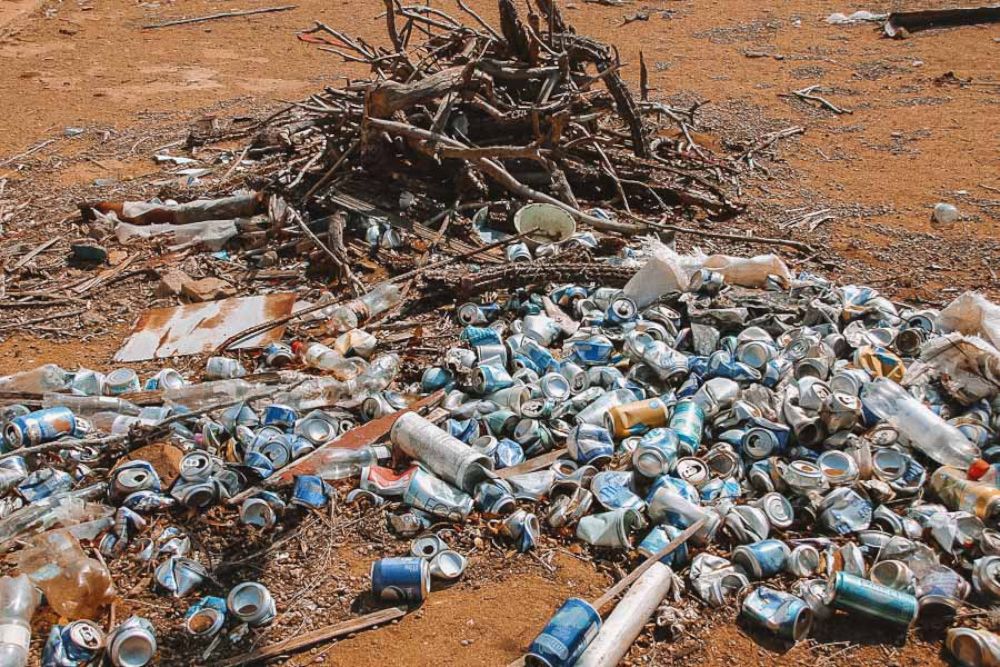
Arriving at Cabo de la Vela, we find a small, authentic village by the sea, oriented towards sports tourism. It is run by Wayuus families and is also known for its spot of Kite Surf. In fact, many schools have already been set up, and this can be the opportunity for a longer stage. It feels good here! We then take the opportunity to stroll through the village to meet the children playing in the streets and the women weaving the Mochila bags you’ll find all over the country.
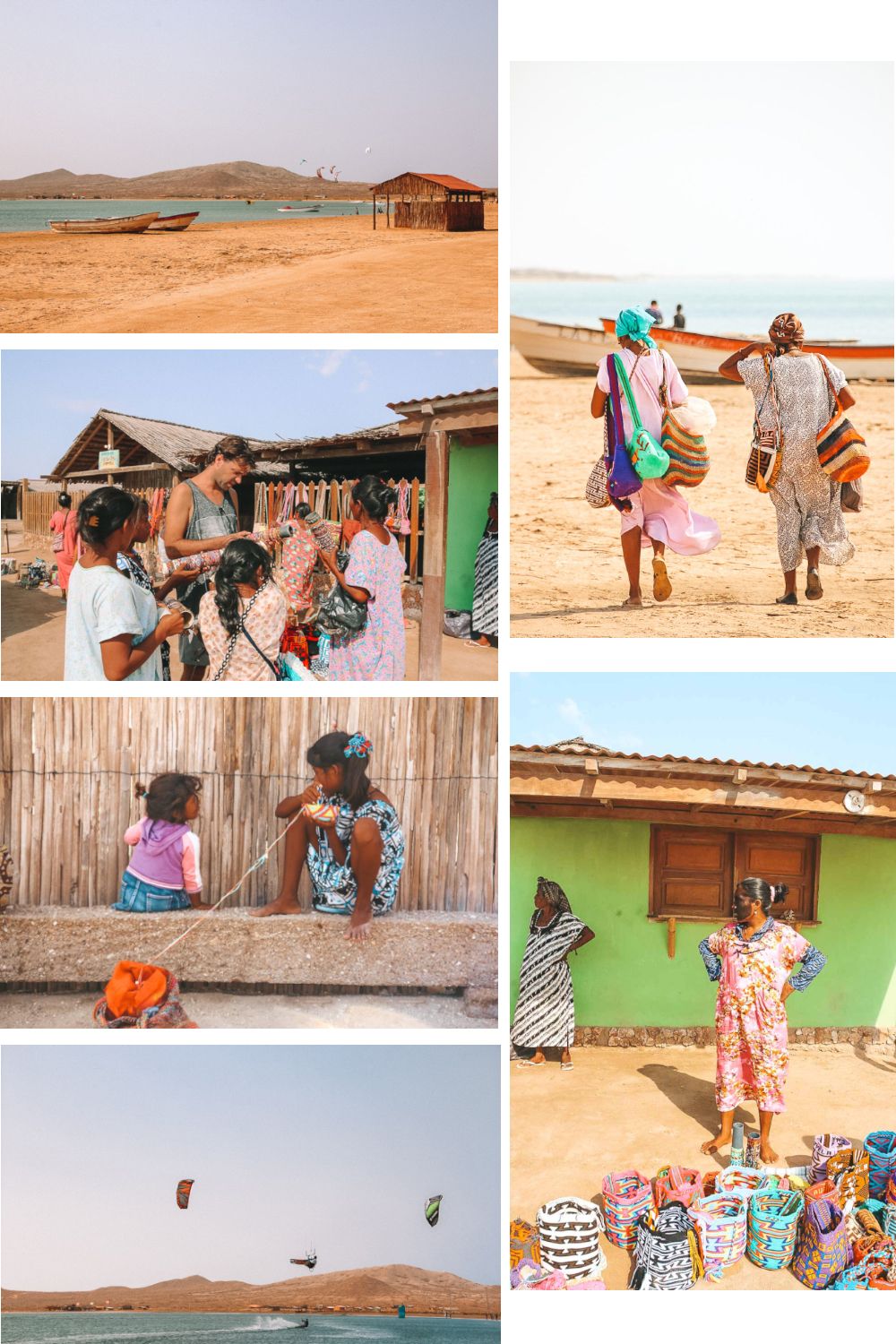
Without having been able to resist bags and bracelets, we set off again to discover the “Azucar drumstick” which faces the sea and offers a beautiful view of the desert surrounding Cabo de La Vela, before enjoying the beach of the same name, where we enjoy a pristine landscape with pelicans diving into the water to fish just a few meters away. To round off a long day, we are treated to a sunset overlooking the sea at El Faro. The view is magnificent and well worth the detour.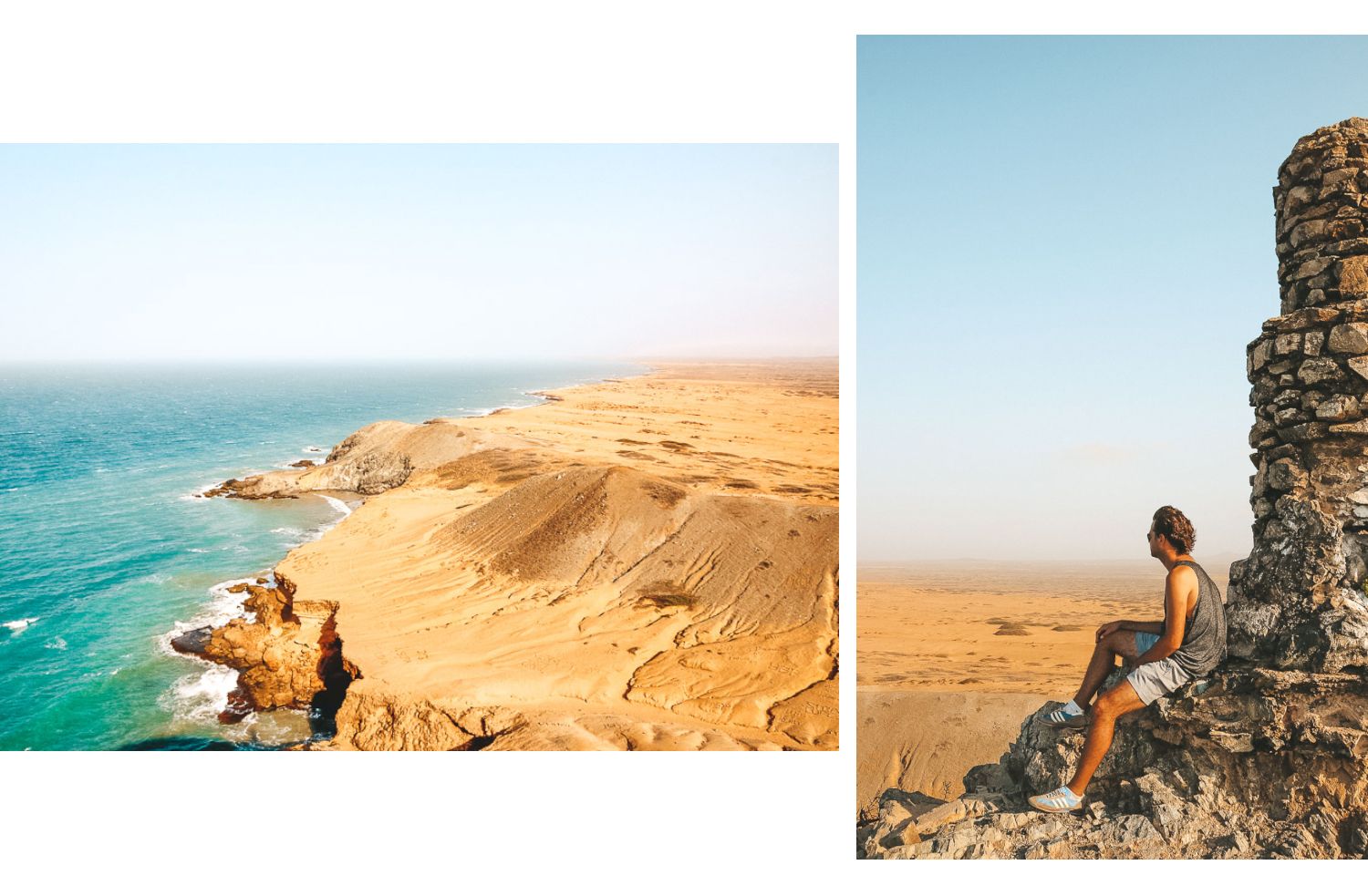 The evening that follows is short and after dinner in our little shacks, we join our “Chinchorros” (large hand-woven hammocks) for a bridal experience we hadn’t yet had on our world tour.
The evening that follows is short and after dinner in our little shacks, we join our “Chinchorros” (large hand-woven hammocks) for a bridal experience we hadn’t yet had on our world tour.
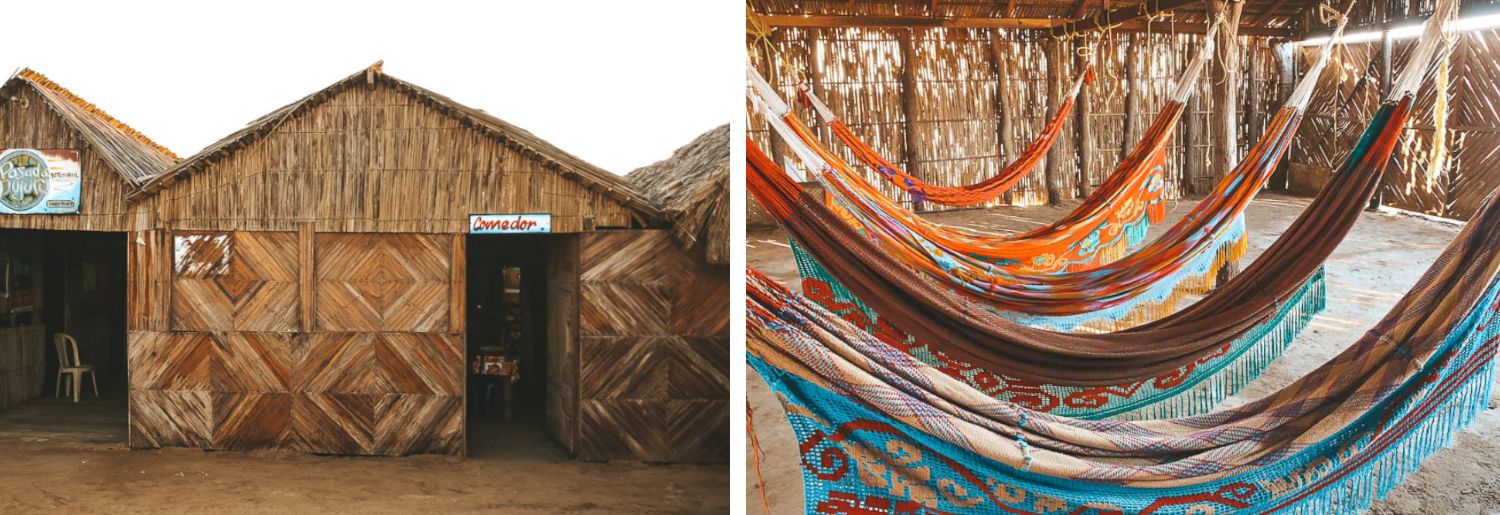
D2 | TAROA DUNES AND PUNTA GALLINAS
The next day, we hit the road again for another 4 hours through landscapes that are becoming exceptional and where we encounter more and more roadblocks of children asking us for “Galletas“, dry cakes they love. Desert passages, passages strewn with high then low cacti, then rocky passages follow one another until we reach the Taroa sand dunes. What can I say? well nothing, maybe a wow! Just open your eyes wide and enjoy being in a unique, unspoilt place as you have a kilometer-long beach to yourself with a gigantic dune plunging into the Caribbean Sea.
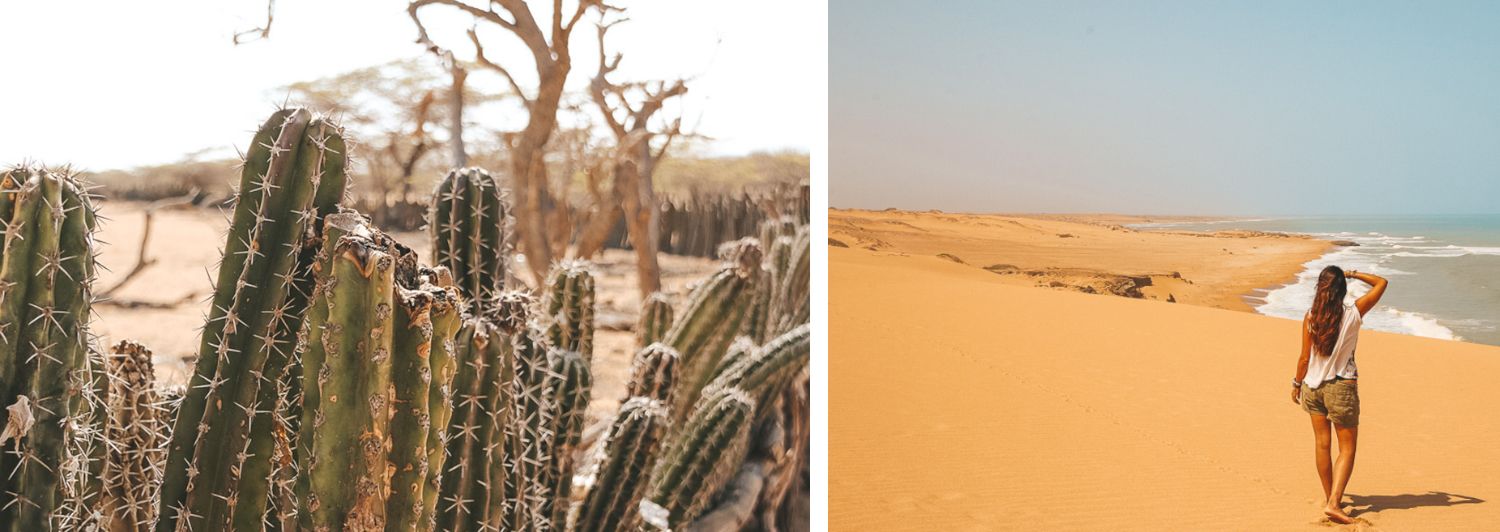
After such emotions, it’s time for lunch in Punta Gallenas, in our hotel of the day, where the view is absolutely exceptional with a cliff overlooking a golden sandy beach. The fish is excellent, and once we’ve swallowed it, we take the opportunity to chat with the women weaving a Chinchorro next to us, and to say the least, we’re impressed by the meticulousness of the work. The Wayuus women are true artists, and we can now better understand the work behind a bag (1 month) or a chinchoro (3 weeks).
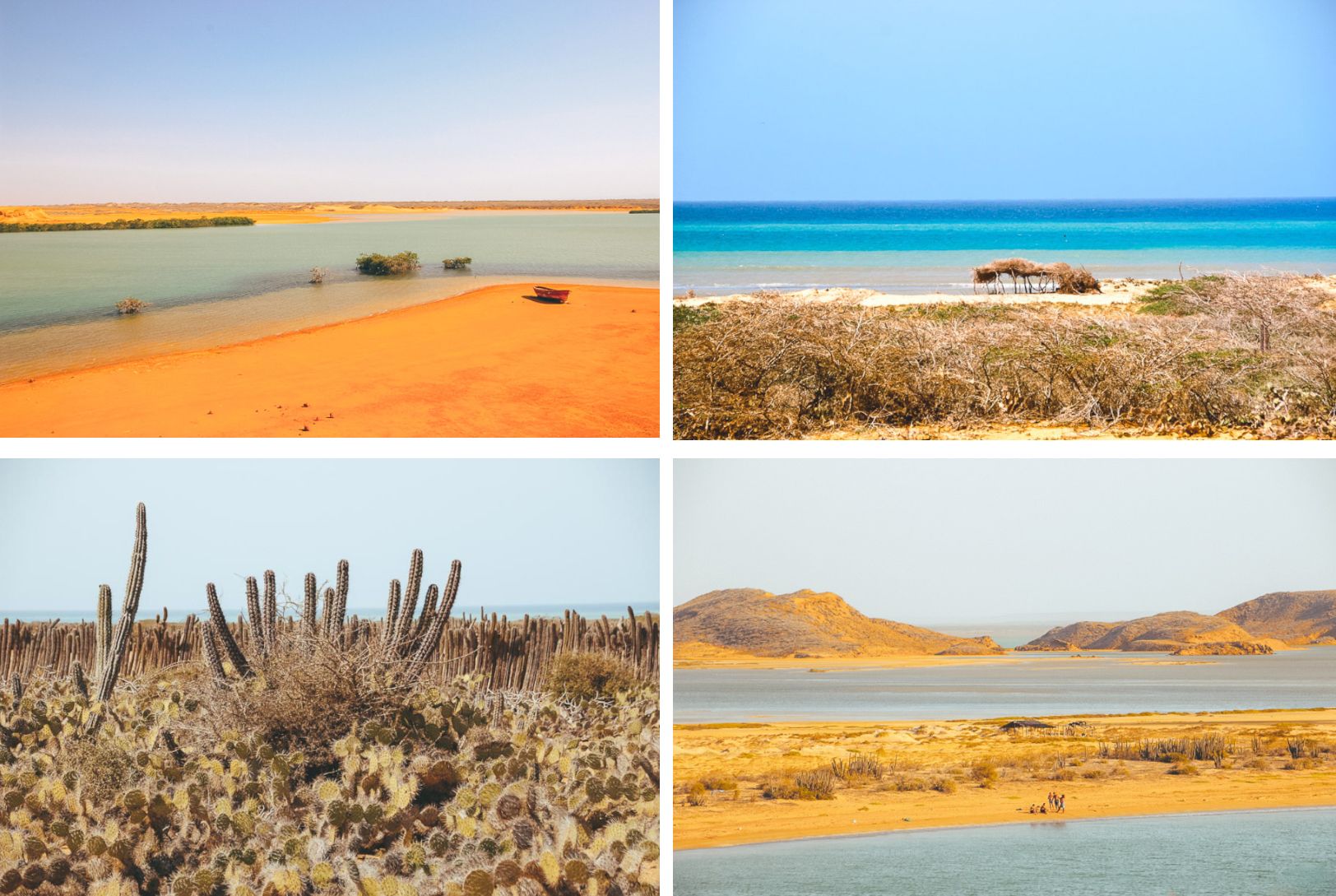
We’ll then visit the faro de Punta Gallenas marks the northernmost point of South America and Colombia, and was the route used by Pablo Escobar to bring drugs out of the country. We then go for a swim and enjoy the sunset at the end of the bay at Punta Guja on Playa Bonita. Dinner was again excellent, which was a very positive point on this tour, as we had the choice for only 10,000 extra COP of a nice lobster tail before spending our second night in Chinchorros.
We took advantage of the sunrise to admire the colors and the landscape in the company of the inn’s two parrots. After a short 20-minute boat transfer, you’ll be on your way home at around 9 a.m saving us a 2-hour drive until we arrived in the late afternoon at Santa Marta, with a long lunch break and some essential souvenir shopping. Riohacha.
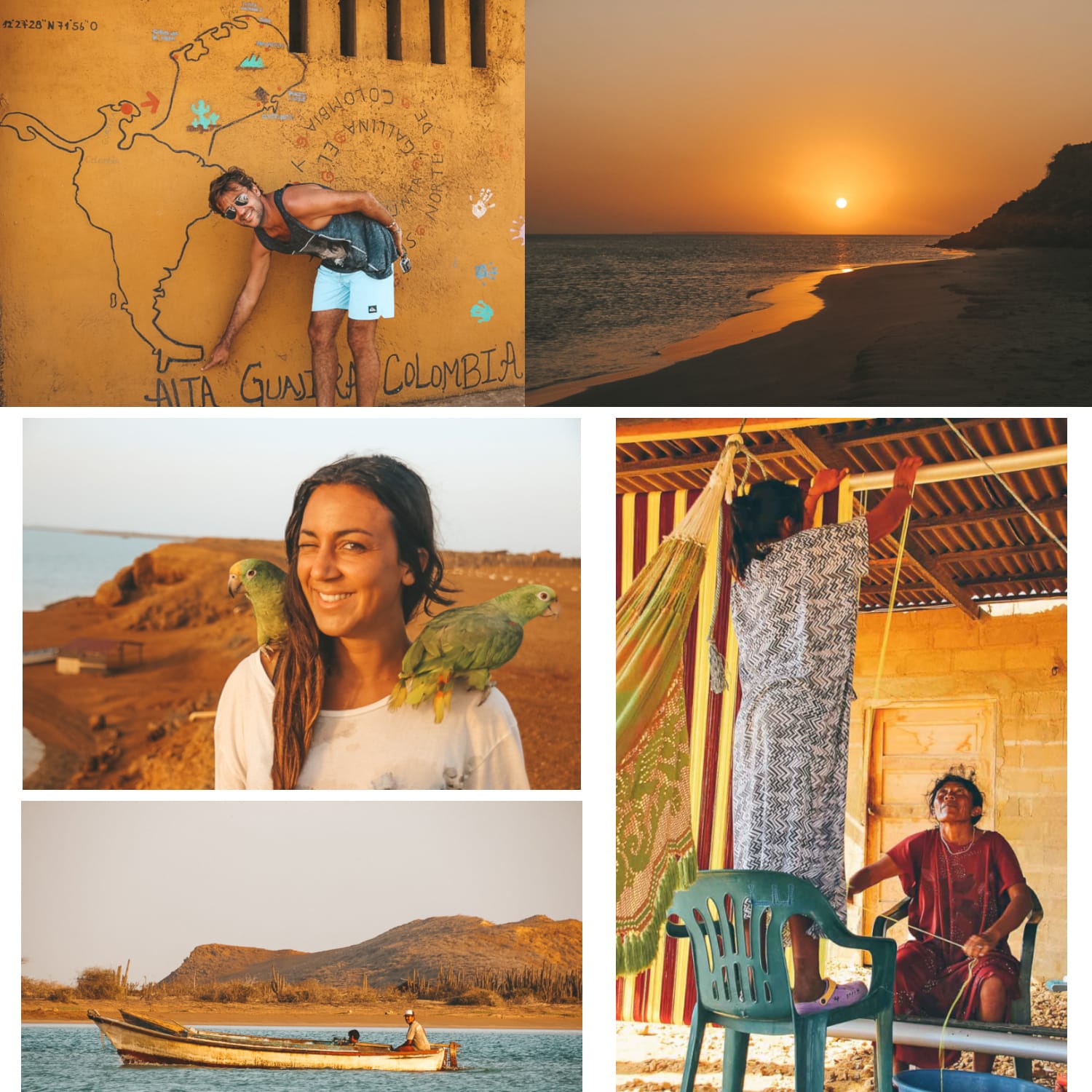
Before you leave, don’t forget to read all our other articles on Colombia to help you prepare for your trip:
- Charming villages: Salento, Cocora Valley, Villa de Leyva and Raquira
- Medellin, what to do and where to stay in this city
- Cartagena, what to do in this city
- A cooking class in Cartagena
- Santa Marta and Tayron Park, all our practical advice
- Explore the Armenia and Salento regions, renowned for their coffee production
- Playa blanca, why we are disappointed with this beach
- Budget and 3-week itinerary
- Guatapé, an unusual hotel in Colombia
The Guajira remains for us the highlight of our stay in Colombia, and we can only advise you to go there for everything we’ve just described. It’s a relatively uncrowded area where you can interact with the locals. As I write this, I’m even thinking “should I give them the name of this un-touristy region? “I’m unveiling one of our favorites, so please consider preserving this place.

